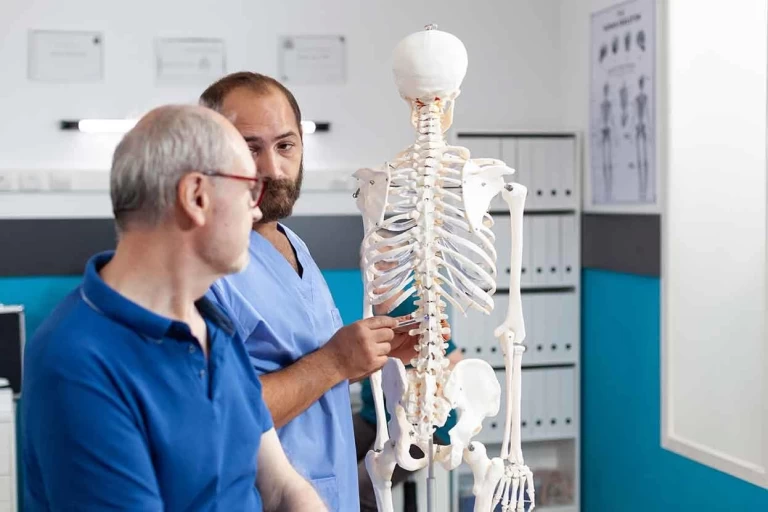
Upper cervical chiropractic care focuses on the relationship between the upper cervical spine (the neck region) and the rest of the body. This specialized form of chiropractic care aims to correct misalignments in the upper cervical spine, which can have profound effects on overall health, particularly spinal health. This article delves into the significance of upper cervical chiropractic, its methodologies, benefits, and its role in maintaining spine health.
Anatomy of the Upper Cervical Spine
The upper cervical spine consists of the atlas (C1) and axis (C2), the top two vertebrae in the spinal column. These vertebrae support the skull, enable a wide range of head movements, and protect the brainstem, which controls many vital bodily functions.
Atlas (C1): The atlas is a ring-like vertebra that supports the skull.
Axis (C2): The axis has a unique structure with an upward projection called the odontoid process or dens, which allows the atlas and skull to pivot.
The proper alignment of these vertebrae is crucial as even a slight misalignment can impact the nervous system, potentially leading to various health issues.
Importance of Spinal Alignment
Spinal alignment is fundamental for optimal nervous system function. The spine houses the spinal cord, which, along with the brain, forms the central nervous system (CNS). Misalignments, or subluxations, in the spine can disrupt the communication between the brain and the body, leading to pain, discomfort, and other health issues.
Upper cervical chiropractic care specifically addresses these misalignments at the top of the spine, which can influence the alignment of the entire spinal column.
Methodologies in Upper Cervical Chiropractic Care
Upper cervical chiropractors use precise diagnostic tools and gentle adjustment techniques to correct spinal misalignments. Some common methodologies include:
Orthogonal Approach: This method involves adjusting the spine to a position that is perpendicular to the horizontal plane, focusing on the atlas vertebra. The goal is to achieve an orthogonal position of the atlas relative to the skull and spine.
Blair Technique: This technique uses x-rays to assess the specific misalignment patterns unique to each patient and provides tailored adjustments.
NUCCA (National Upper Cervical Chiropractic Association): NUCCA practitioners use specific measurement and correction protocols to align the atlas vertebra without using forceful manipulation.
Benefits of Upper Cervical Chiropractic Care
Upper cervical chiropractic care offers a range of benefits, particularly in the realm of spinal health:
Pain Relief: Correcting misalignments in the upper cervical spine can alleviate headaches, neck pain, and back pain by reducing nerve irritation and improving spinal function.
Improved Nervous System Function: Proper spinal alignment enhances communication between the brain and the body, which can improve overall health and bodily functions.
Enhanced Mobility: Patients often experience increased range of motion in the neck and back following upper cervical adjustments.
Prevention of Degenerative Changes: Maintaining proper spinal alignment can prevent or slow down degenerative changes in the spine, such as osteoarthritis.
Detailed Survey Insights
Recent surveys and studies have highlighted the positive impact of upper cervical chiropractic care on spinal health. For instance, a survey conducted on patients receiving upper cervical chiropractic care reported significant improvements in pain levels, mobility, and overall quality of life.
Patient Demographics
Age Range: Patients ranged from young adults to seniors, indicating that upper cervical chiropractic care is beneficial across all age groups.
Gender Distribution: The survey included an equal representation of males and females, demonstrating its wide applicability.
Related Issues and Considerations
While upper cervical chiropractic care is beneficial, it is essential to address related issues to ensure comprehensive spine health:
Ergonomics: Proper ergonomics in daily activities, such as using a computer or lifting objects, is crucial to maintain spinal health and prevent misalignments.
Exercise and Stretching: Regular exercise and stretching can strengthen the muscles supporting the spine and improve flexibility.
Posture: Maintaining good posture is vital to prevent undue stress on the spine and avoid misalignments.
Expert Commentary
Dr. Byoung Lee, a renowned upper cervical chiropractor, emphasizes the importance of precise adjustments: "Upper cervical chiropractic care is a science-based approach that requires a deep understanding of the spine's biomechanics. By focusing on the upper cervical region, we can address the root cause of many spinal and health issues, offering patients a non-invasive solution for pain relief and improved well-being."
Survey Methodology
The surveys conducted on upper cervical chiropractic care involved several key methodologies to ensure accuracy and reliability:
Sample Size: The surveys included a diverse group of patients with varying degrees of spinal issues.
Data Collection: Data was collected through patient questionnaires, physical examinations, and follow-up assessments to gauge long-term effects.
Analysis: Statistical analysis was used to interpret the data, highlighting significant trends and outcomes.
Conclusion
Upper cervical chiropractic care plays a crucial role in maintaining spine health. By addressing misalignments in the upper cervical spine, this specialized form of chiropractic care can alleviate pain, enhance nervous system function, and improve overall health. For those seeking non-invasive, effective solutions for spinal health issues, upper cervical chiropractic care offers a promising option.
By staying informed and proactive about spinal health, you can enjoy a better quality of life and prevent future health issues related to the spine.



